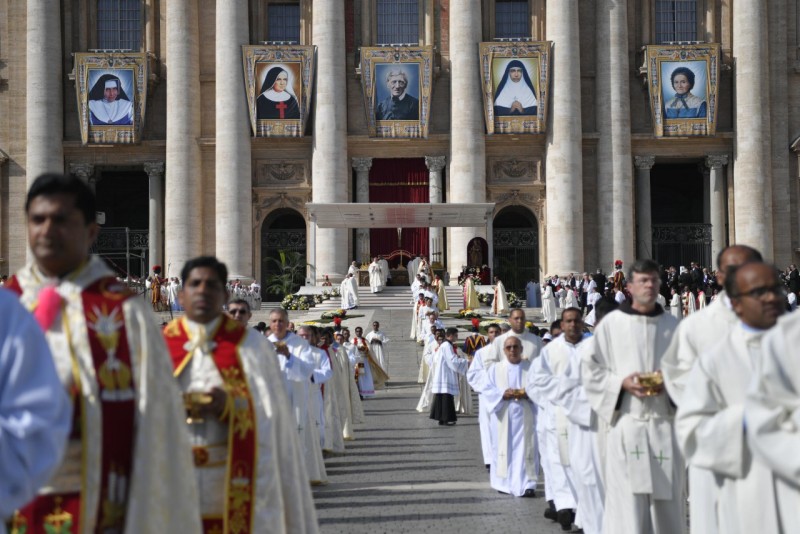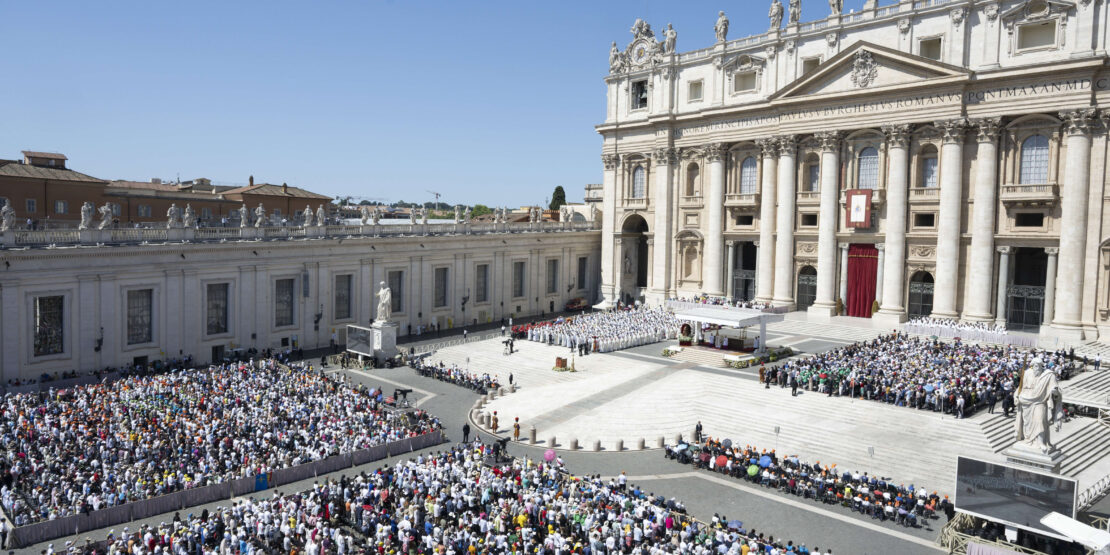Papal Masses and Liturgies
In General about Papal Liturgies
Throughout the year, the Holy Father offers public Masses on some special occasions and major solemnities, including Christmas and Easter.
The Holy Father’s schedule is currently only confirmed a few weeks in advance. We are unable to request tickets for a liturgy that has not yet been announced.
Below, you can find more information about some of these traditional Papal liturgies and some information which we hope will be helpful as you plan your pilgrimage to Rome.

Canonization Masses
*The next Canonization Mass: October 19 for Blesseds Ignatius Choukrallah Maloyan, Peter To Rot, Vincenza Maria Poloni, María del Monte Carmelo Rendiles Martínez, Maria Troncatti, José Gregorio Hernández Cisneros and Bartolo Longo. The Mass will begin at 10:30 am in St. Peter’s Square. No tickets are being issued. If you wish to attend, please arrive early to secure a seat.
The Rite of Canonization, celebrated during Holy Mass, is the final and conclusive moment of a long and thorough process through which the Holy Father, through a solemn and infallible act, determines that a Blessed may be inscribed in the Roll of Saints, that is, the official list of those who are venerated as such in the Catholic Church and that his or her memory be celebrated by the universal Church.
Historically, the Church has from the very beginning always honored the Apostles and Martyrs, “celebrating them with special veneration together with the Blessed Virgin Mary and the holy Angels, and has piously implored the help of their intercession” (John Paul II, Apostolic Constitution Divinus perfectionis Magister). Although originally only Apostles and Martyrs were venerated, the Church over time extended the liturgical remembrance also to other persons who, though they did not die for the faith, bore witness to a heroic degree to the commitments of Baptism by spiritual and daily “martyrdom” (“witness”). Thus entered into the veneration of God’s people, along with the Martyrs, other confessors of the faith: Pastors, Ascetics and Virgins who realized the original and constitutive idea of baptismal holiness as conformity to the virgin, poor and obedient Christ (cf. Introduction Litany of the Saints) and finally all others, whom the singular exercise of Christian virtues and divine charisms commend to the pious devotion and imitation of the faithful (cf. John Paul II, Apost. Const. Divinus perfectionis Magister).
The solemn concluding act of canonization, takes place within the Eucharistic celebration, the sacrament in which God’s holy people are gathered in holy assembly to celebrate the Paschal Mystery of Christ, the “Thrice Holy.” The rite includes:
– Hymn Veni, creator Spiritus: this is the hymn addressed to the Holy Spirit, the Giver of all holiness; the gift of new saints is like “a new epiclesis” on the Church.
– Petition: the Prefect of the Congregation for the Saints, accompanied by the postulators, asks the Holy Father that the Canonization of the Blesseds of whom he outlines the biography and heroic virtues be proceeded with.
– Litany of the Saints: in the liturgy, heaven opens, and the earthly assembly joins the heavenly assembly in intoning that hymn eternally sung in the heavenly seats; the intercession of the Saints among whom the newly canonized will be numbered is requested.
– Formula of Canonization: the Holy Father, through this official and solemn act, declares and defines as “Saint” the Blessed, authorizing the celebration of their liturgical memory for the universal Church.
– Hymn of praise and thanksgiving: addressed to God, for the gift of the new Saints.
– Thanksgiving: the Prefect of the Congregation for the Saints, together with the postulators, thanks the Holy Father and requests that he proceed with the drafting of the Apostolic Letter about the Canonization having taken place.
Each sign during a Canonization Mass is filled with meaning, including:
– The flowers next to the relics: are a reminder that the saints, especially the martyrs, are the seed of new Christians and from their witness, grafted into the sacrifice of Christ (cf. Jn. 12:24-26), the freshness of the Gospel message and the vitality of the Church today flourishes.
– The veneration of the relics: through the offering of incense by some representatives of God’s people, reminds us that holiness is the vocation of all the baptized and that the “Saint,” officially recognized by the Church, comes from God’s holy people in whom he exercised his virtues.
– The banner with the picture: the Saint, who is now part of the heavenly host of Saints, has a name and a face. What the rite wants to recall “is above all the call to holiness that the Lord makes to each of us, that call he addresses to you as well: ‘Be holy, for I am holy'” (Lev. 11:44; 1 Pet. 1:16) (Francis, Ap. Ex. Gaudete et Exsultate 10).

